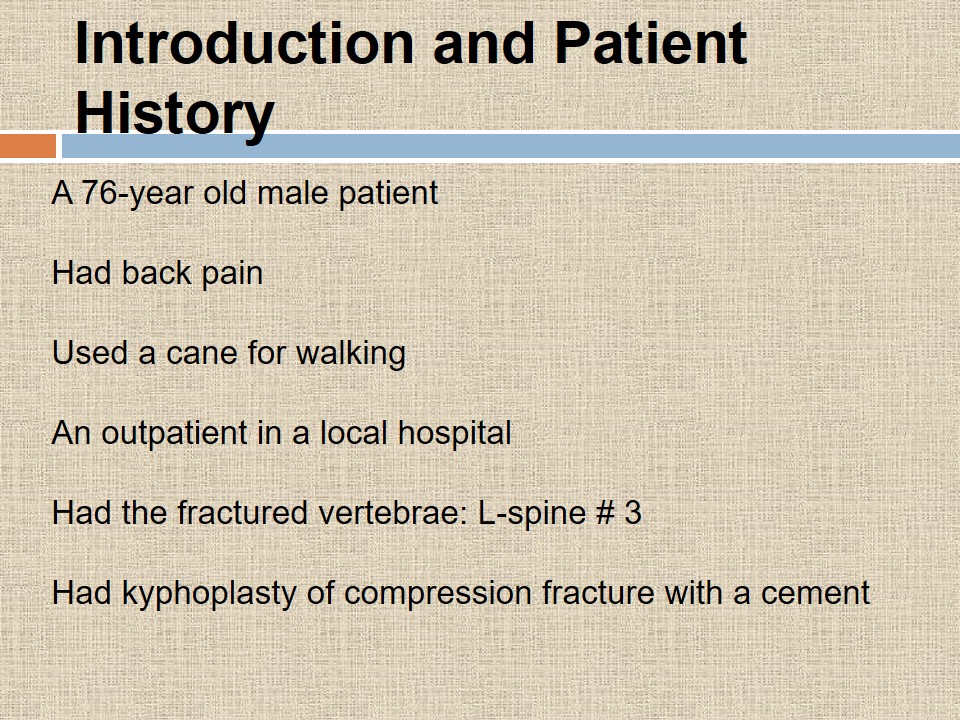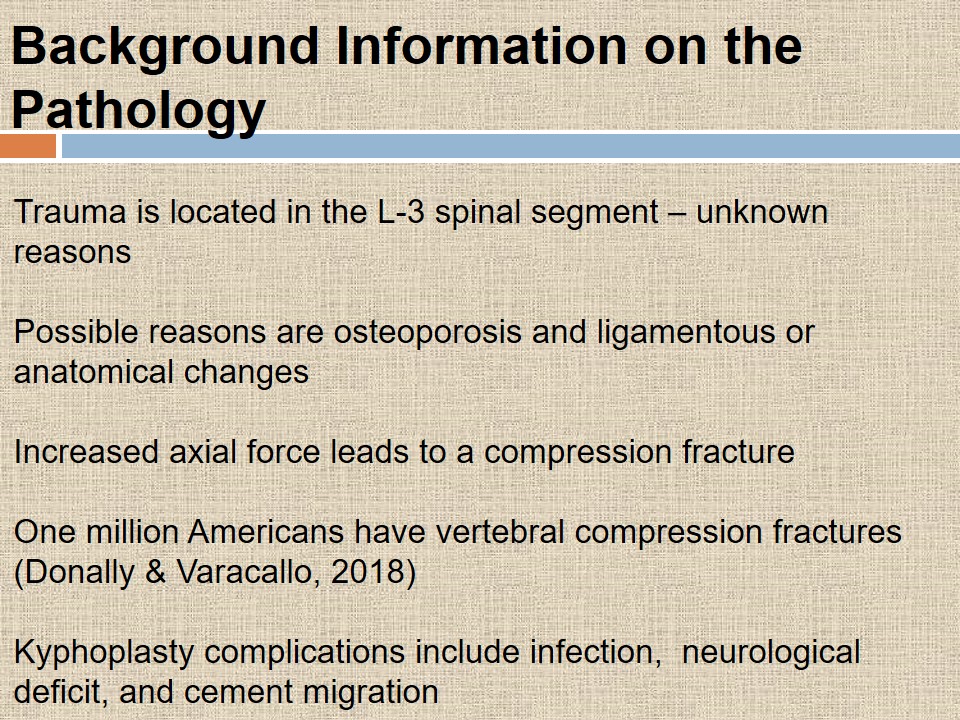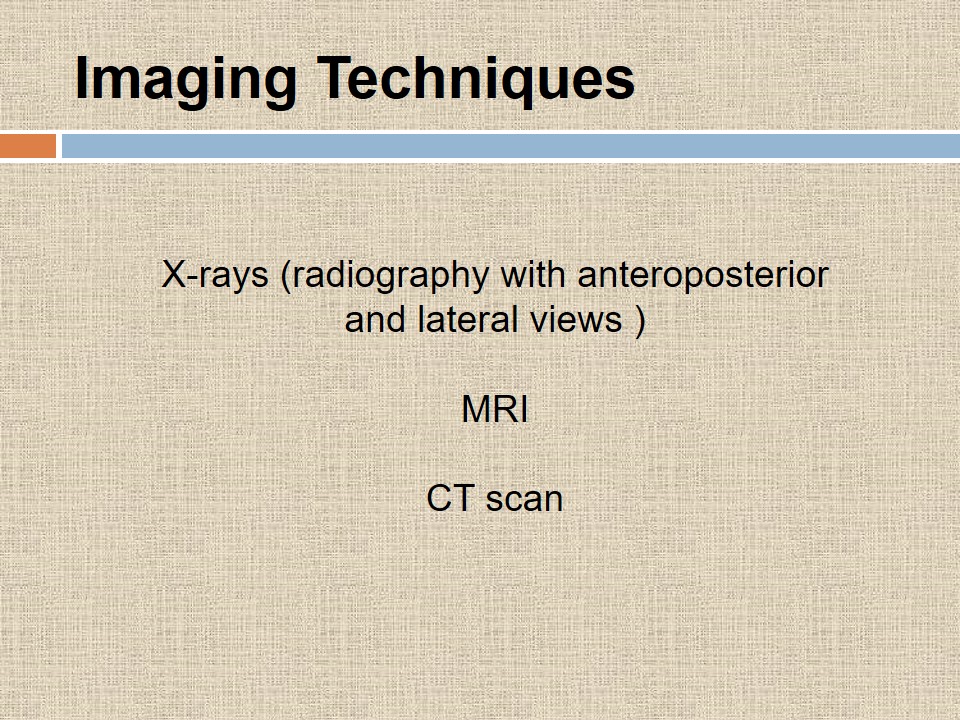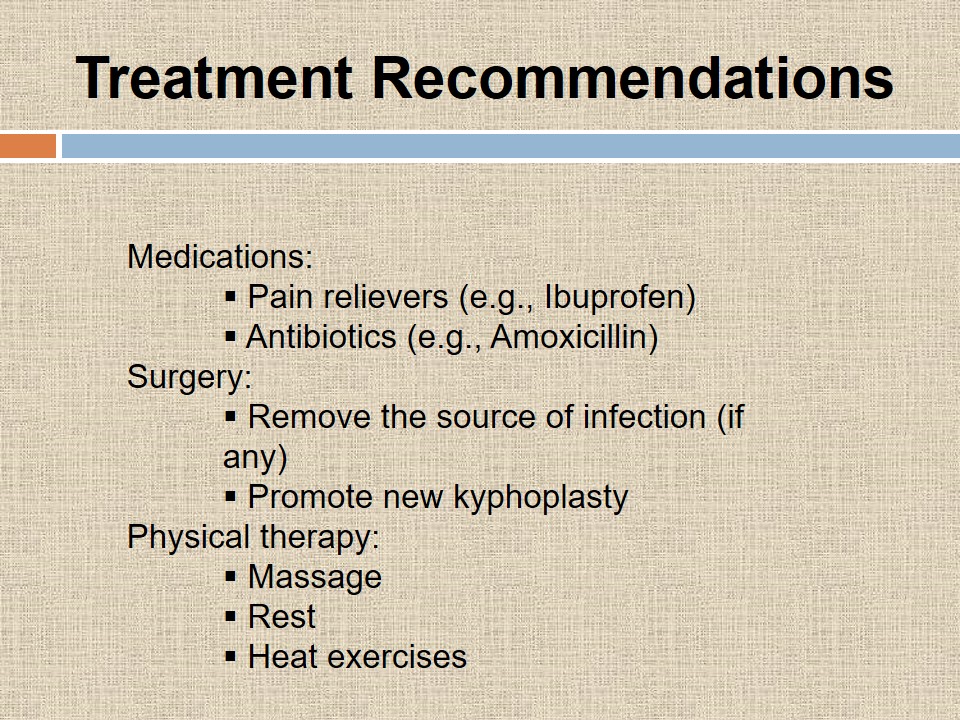Introduction and Patient History
- A 76-year old male patient.
- Had back pain.
- Used a cane for walking.
- An outpatient in a local hospital.
- Had the fractured vertebrae: L-spine # 3.
- Had kyphoplasty of compression fracture with a cement.
This presentation introduces the case of a 76-year-old male outpatient. According to the patient, his chief complaint is back pain. The peculiar feature of the situation is that the man used a cane for walking. Taking into consideration his history, no information about the time periods was given, but the patient had kyphoplasty of compression fracture of his L-spine # 3 as a result of which the fractured vertebra was filled with cement.

Background Information on the Pathology
- Trauma is located in the L-3 spinal segment – unknown reasons.
- Possible reasons are osteoporosis and ligamentous or anatomical changes.
- Increased axial force leads to a compression fracture.
- One million Americans have vertebral compression fractures (Donally & Varacallo, 2018).
- Kyphoplasty complications include infection, neurological deficit, and cement migration.
The L-3 spinal segment is located in the middle of the lumbar spine and performs a crucial role in supporting the weight of a person’s torso. As a rule, compression fracture occurs when a part of a spine bone (vertebra) is compressed due to trauma or other reasons. The most common etiology for this condition is osteoporosis when fractures become fragile (Donnally & Varacallo, 2018). Ligamentous and anatomical changes may also lead to vertebra complications when the spinal column rotates around the axis center and provokes new axial force that leads to a compression fracture (Donnally & Varacallo, 2018). About one million Americans are diagnosed with vertebral compression fractures (VCFs), and 30% occur in the L2-L5 region (Donnally & Varacallo, 2018). Kyphoplasty is a safe procedure to improve the quality of life and functions of the spine, but it may include such complications as infection, neurological deficit, or cement migration (spinal or pulmonary).

Imaging Techniques
- X-rays (radiography with anteroposterior and lateral views );
- MRI;
- CT scan.
Although VCFs are common clinical problems in adult patients, they are not always clinically suspected because of non-specific presentations. Therefore, deep radiologic investigations are required to detect the problem. Radiography of anteroposterior and lateral views (X-rays) is recommended to identify prototypical wedge-shaped deformation of the vertebra (Patel & Carter, 2018). MRI helps to evaluate the chronicity of VCFs, and CT scan is used to define the extent of the fracture and kyphoplasty-related changes (Patel & Carter, 2018). Regular lateral radiographs are necessary to track the process of healing or fracture progression if any.

Treatment Recommendations
- Medications:
- Pain relievers (e.g., Ibuprofen);
- Antibiotics (e.g., Amoxicillin).
- Surgery:
- Remove the source of infection (if any);
- Promote new kyphoplasty.
- Physical therapy:
- Massage;
- Rest;
- Heat exercises.
Treatment of complications associated with kyphoplasty and VCFs may occur at three stages. Firstly, it is recommended to reduce pain with the help of pain relievers like Ibuprofen. However, a doctor’s approval is required in this case to avoid new complications or allergies. Antibiotics are required to reduce the chances of infections or other surgery-related complications. If there is a serious threat to the patient’s spine because of cement migration, new surgery can be required to add the material or to remove the source of infection. Finally, to stabilize the condition of a patient, it is possible to take a massage or some heat exercises to strengthen the body. Rest is an important part of therapy to avoid excessive loads, walks, and other threats.

References
Donnally, C. J., & Varacallo, M. (2018). Vertebral compression fractures. Web.
Patel, A., & Carter, K. R. (2018). Percutaneousvertebroplasty and kyphoplasty. Web.